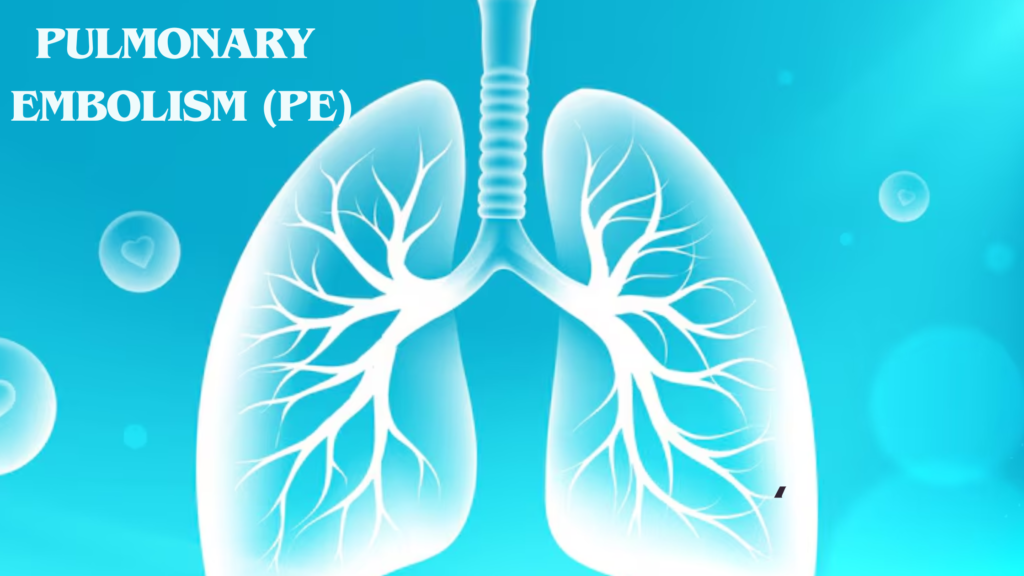🩸 Pulmonary Embolism (PE) – Overview
A pulmonary embolism is a sudden blockage in one of the pulmonary arteries in the lungs, usually caused by a blood clot that traveled from elsewhere in the body—most commonly the legs (deep vein thrombosis, or DVT).
This blockage reduces blood flow to lung tissue, can cause lung damage, and may be life-threatening if not treated promptly.
⚙️ Causes and Risk Factors
- Deep vein thrombosis (DVT) is the main source of clots causing PE.
- Risk factors include:
- Prolonged immobility (bed rest, long flights)
- Surgery (especially orthopedic or pelvic)
- Cancer
- Pregnancy and postpartum period
- Oral contraceptives or hormone replacement therapy
- Obesity
- Smoking
- Genetic clotting disorders (e.g., Factor V Leiden)
- Previous history of DVT or PE
📋 Symptoms
- Sudden shortness of breath
- Chest pain (often sharp, worse with deep breaths)
- Rapid heart rate
- Cough (sometimes with bloody sputum)
- Lightheadedness or fainting
- Anxiety or feeling of impending doom
- Leg pain or swelling (if DVT present)
🩺 Diagnosis
- Clinical evaluation and risk assessment (Wells score)
- D-dimer blood test (helps rule out PE in low-risk cases)
- Chest CT angiography (CTA) – gold standard imaging test
- Ventilation-perfusion (V/Q) scan – alternative if CTA contraindicated
- Ultrasound of leg veins – to detect DVT
- Electrocardiogram (ECG) and blood gases may support diagnosis
💊 Treatment
Immediate Management
- Anticoagulants (blood thinners): Heparin, low molecular weight heparin, or direct oral anticoagulants (DOACs)
- Oxygen therapy if needed
- In severe cases:
- Thrombolytic therapy (clot dissolvers)
- Surgical embolectomy or catheter-directed thrombectomy (rare)
Long-term Treatment
- Oral anticoagulants (warfarin or DOACs) for 3–6 months or longer depending on risk factors
- Compression stockings to prevent DVT
- Lifestyle changes to reduce risk
⚠️ Complications
- Pulmonary hypertension (chronic clots leading to high lung artery pressure)
- Right heart failure (cor pulmonale)
- Recurrence of PE
- Death if untreated or severe
🛡️ Prevention
- Early mobilization after surgery or illness
- Use of compression stockings or pneumatic devices
- Prophylactic anticoagulation in high-risk patients
- Stay active, avoid prolonged immobility
- Maintain healthy weight and quit smoking
